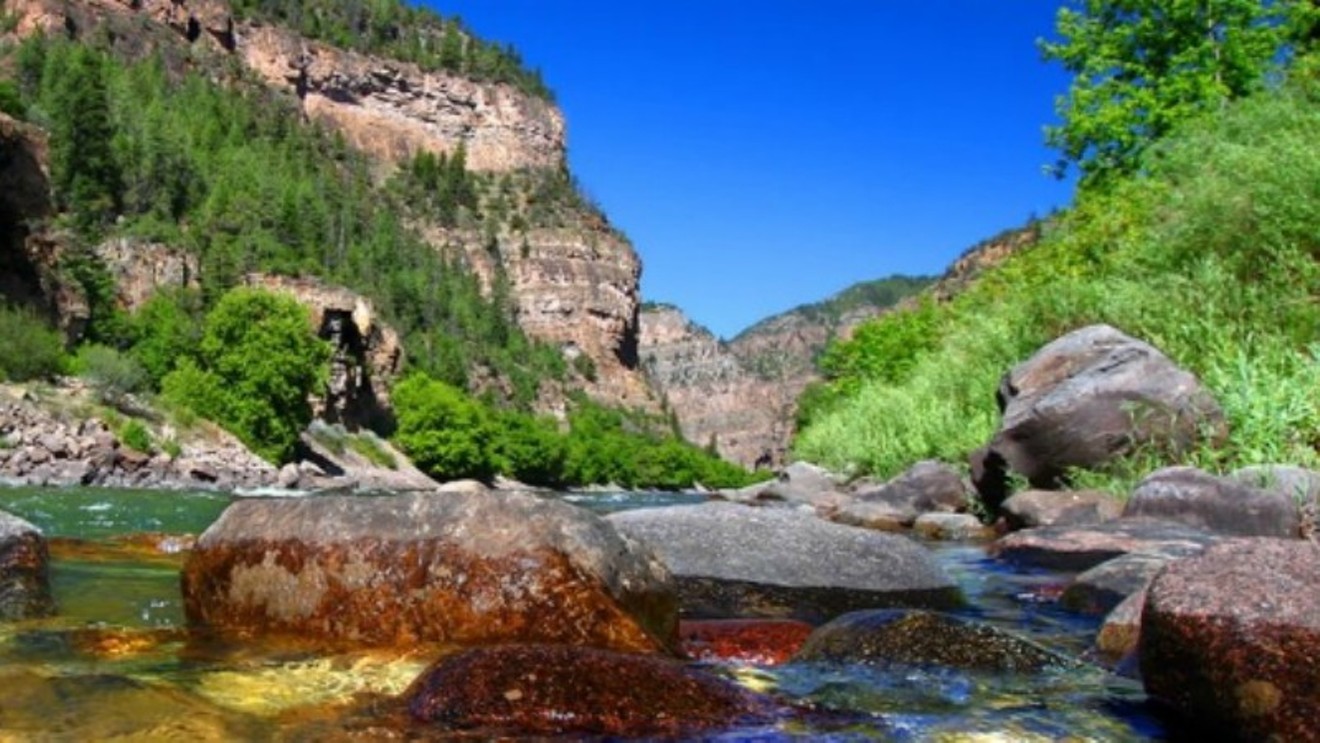The Colorado River has already reached its peak flow for the season, and that's lousy news when it comes to fire danger, water supply for farmers and residential users, recreational opportunities and the health of numerous fish species, among other things. And while Victor Lee, an engineer with the Bureau of Reclamation, isn't ready to hit the panic button yet, he concedes that bad can still turn worse.
"If we end up with several dry years, the situation can change pretty quickly," Lee says. "And even more problematic is the total water going into Lake Powell right now. It's much less than average, and that could have very severe consequences for the upper-basin states of Wyoming, Utah and Colorado."
Brenda Alcorn, senior hydrologist for the Colorado Basin River Forecast Center in Salt Lake City, notes that the low peaks "are indicative of the poor snowpack and poor runoff this year, and what we've got is pretty much what we're going to get. We've reached the bottom line in terms of volume — and we're not expecting a lot of water to flown down into Lake Powell this year."
She adds that "this is one of the earliest peaks we've seen" for Colorado River flow. "Last year was a pretty good runoff year, but in general during the last fifteen years or so, we've definitely been on the dry side, with a few wet years mixed in. It does appear to be a trend, and that leads to earlier peaks and lower volumes."
Lee elaborates on Alcorn's points.
"Two elements to focus on would be the earliness of the peak and the magnitude of the peak," he points out. "We're dealing with the low snowpack, but upstream, in the upper basin, we're not extremely low. If we move further south in the state, though, the snowpack gets very low. In some places, it's the lowest snowpack and forecasted runoff in the historical record, as far as the earliness of the peak. And that's concerning for water management, because it's an indication there may not be so much water later on in the year that we would normally have — flows that are adequate to meet agricultural demands or biology needs or even recreational needs."
Potential shortages also exacerbate longtime conflicts within the state over water use, as Lee, who works directly on the Colorado-Big Thompson and Fryingpan-Arkansas projects, knows from personal experience.
"The Colorado-Big Thompson project is the single largest diversion of the Colorado River to the South Platte — and I operate the Green Mountain Reservoir, which is designed to meet some of the future needs of the Western Slope," he reveals. "So I will coordinate reservoir operations to best manage pools of water to meet agricultural and biological issues that may occur in the Colorado River. And the earlier peak is an indication that lower flows will arrive earlier as well — and therefore, there might be higher demands in agriculture that will shorten the amount of time we have to store water in our reservoirs and require us to deliver water over a longer period of time in order to keep agricultural issues whole."
Low flows also impact the Colorado River Endangered Fish Recovery Program.
"There are four species of fish that are native to the Colorado River that are considered endangered: the humpback chub, the bonytail chub, the Colorado pikeminnow and the razorback sucker," Lee goes on. "And there's a stretch of water between the Gunnison River confluence in Grand Junction that, if it didn't have extra water during the September-October period, would be de-watered. That would affect the fish's ability to move from the lower to the upper portion of the river, so we release water from the reservoirs at different times to make sure that doesn't occur. But we also need to meet the needs for irrigation and agricultural users, as well as municipal and industrial water users. So there are a variety of concerns over that, in addition to concerns about biology and also water quality."
The upper Colorado River basin "isn't in as much pain as other areas of Colorado," Lee acknowledges. "All of the reservoirs are expected to fill or get near to full, in part because we've had several previous years of quite a bit of water — and there's a lot of water in the system right now. But in the southern part of the state, they don't have much water at all. They're definitely in pretty severe-to-extreme drought conditions at this point, which has very significant consequences for what water's available for a variety of different uses."
Moreover, Lee stresses, "we have a very connected system. Colorado is a headwaters state. We provide water that is used all the way from the Continental Divide to the Sea of Cortez. So we have water obligations to deliver — obligations that we need to meet for California, Arizona and Nevada, as well as our own uses. What happens here in Colorado has very far-reaching consequences."
[
{
"name": "Air - MediumRectangle - Inline Content - Mobile Display Size",
"component": "12017618",
"insertPoint": "2",
"requiredCountToDisplay": "2"
},{
"name": "Editor Picks",
"component": "17242653",
"insertPoint": "4",
"requiredCountToDisplay": "1"
},{
"name": "Inline Links",
"component": "18838239",
"insertPoint": "8th",
"startingPoint": 8,
"requiredCountToDisplay": "7",
"maxInsertions": 25
},{
"name": "Air - MediumRectangle - Combo - Inline Content",
"component": "17261320",
"insertPoint": "8th",
"startingPoint": 8,
"requiredCountToDisplay": "7",
"maxInsertions": 25
},{
"name": "Inline Links",
"component": "18838239",
"insertPoint": "8th",
"startingPoint": 12,
"requiredCountToDisplay": "11",
"maxInsertions": 25
},{
"name": "Air - Leaderboard Tower - Combo - Inline Content",
"component": "17261321",
"insertPoint": "8th",
"startingPoint": 12,
"requiredCountToDisplay": "11",
"maxInsertions": 25
}
]














